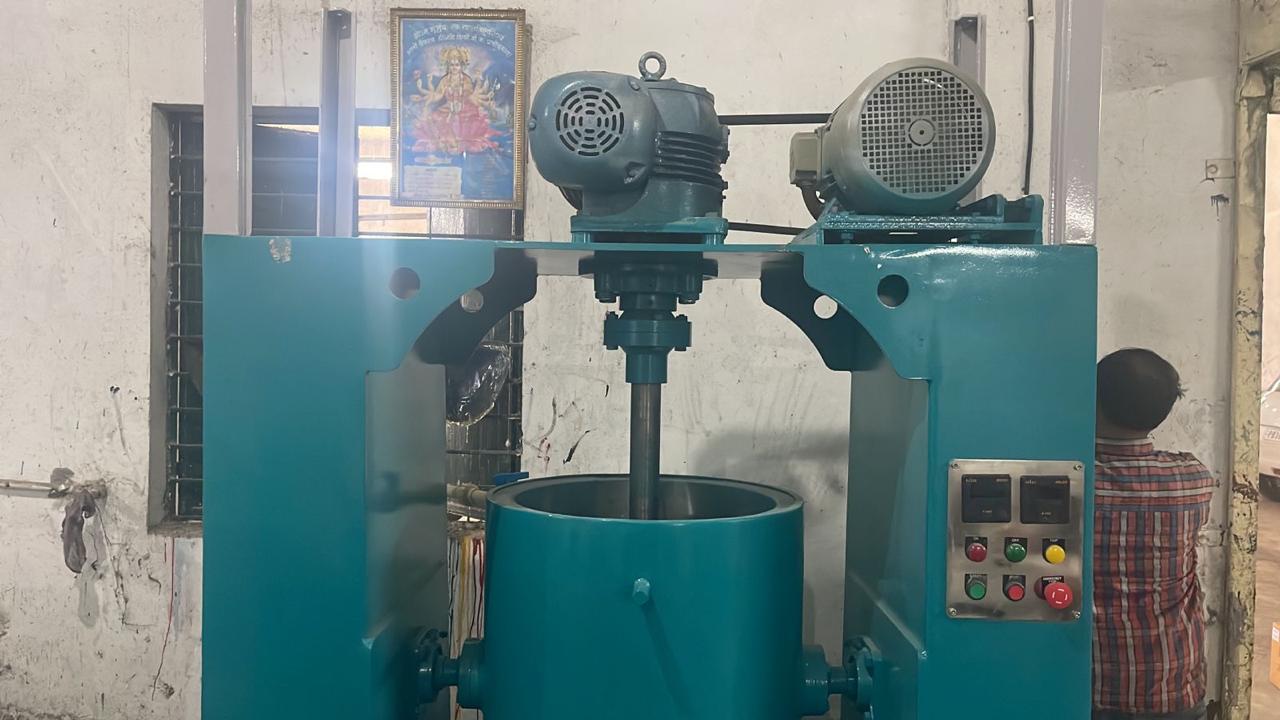by Dr E. Ramanathan PhD
My Dear Parents, Students and Clients,
The True Meaning of Guru Dakshina – A Message for Students, Parents, and Clients
One of the most profound experiences in human life is the acquisition of knowledge. The one who imparts that knowledge – the Guru – becomes a guiding light in our journey of growth. What we offer in return, known as Guru Dakshina, is not merely a fee — it is a sacred gesture of gratitude and respect.
What is Guru Dakshina?
In our ancient tradition, Guru Dakshina refers to an offering given by a student to the Guru after receiving knowledge. It is not restricted to money — it can take the form of material gifts, service, time, or meaningful contributions.
In today’s context, it often translates to an “honorarium” or “professional fee”, yet its deeper significance lies in valuing knowledge and the dedication of the teacher.
Why is Guru Dakshina Fair and Essential?
- The Value of Knowledge: A Guru brings years of learning, research, and lived experience. Their time is not just time — it is life invested. A fair acknowledgment of this is essential.
- Preparation and Depth: Every class, consultation, guidance session, and written note is backed by thoughtful planning, materials, and emotional commitment.
- Sense of Responsibility: Offering a dakshina creates a mental commitment in the learner. It builds respect for the knowledge and accountability in the learning process.
For Parents and Clients:
- A Guru, like a doctor or a lawyer, is a domain expert who invests their time, skill, and sincerity.
- While the spirit of free education is noble, high-quality education requires effort, time, and structured systems.
- Supporting a Guru with a just honorarium is your way of contributing to your child’s meaningful and empowered learning.
For Students:
- Guru Dakshina is not about paying money — it is about expressing your gratitude for the light of knowledge.
- It reflects a mindset of growth, respect, and readiness to learn deeply.
Guru Dakshina is a mutual exchange of respect, gratitude, and collaboration. It is not a price — it is a value.
“Knowledge may be priceless, but the time and experience of the one who imparts it must be valued.”
Understanding this is the first step towards a meaningful learning journey — for the student, the parent, and the client.
Knowledge Has No Price – But the Effort to Share It Deserves to Be Valued
“Knowledge has no price” is a noble idea echoed across centuries. But behind this ideal lies a deeper truth — the time, effort, experience, and structure involved in imparting knowledge must be valued. Without such recognition, the act of teaching risks being reduced to a transactional exchange rather than a sacred process.
1. If Knowledge Is a River, the Teacher Is Its Channel
If knowledge flows like a river, the teacher is the channel through which it reaches learners. For that flow to happen, the teacher prepares content, crafts examples, adapts to the student’s understanding, clears doubts, and builds a learning environment. All of this is not incidental — it is intentional and structured.
2. Time Is a Slice of Life
When a teacher gives time to a student, they are giving a portion of their life. Valuing that time means valuing their dedication, their presence, and their sincere commitment to your growth.
3. The Effort to Make You Understand
Every student learns differently. A good teacher puts in mental and emotional effort to tune their methods to each learner. They explain repeatedly, draw connections, and encourage reflection. This is not mechanical — it is a personal investment. That deserves recognition.
4. Resources and Frameworks
Sharing knowledge is not just about giving information. It requires lesson plans, worksheets, question banks, video lessons, digital tools, and much more. These are not just mental constructs — they involve real effort, time, and often cost. A well-designed learning framework is part of the teacher’s gift.
5. The Depth of Experience
What a teacher offers is not just textbook knowledge. It’s a refined essence of years of lived experience — mistakes, experiments, insights, and achievements. That wisdom transforms learning from surface-level facts to life-applicable truth. It’s priceless — but that doesn’t mean it should go unvalued.
Value ≠ Price
While knowledge itself may be beyond price, the act of sharing knowledge is immeasurably valuable. To treat it as free or casual devalues both the process and the person.
To truly respect knowledge, we must also respect the effort of those who deliver it.
Honoring a teacher’s time and dedication is not just a fee — it is a contribution.
It is not a payment — it is respect.
What we collect as Coaching Fee or Tuition Fee or Training Fees or Consulting Fee is Guru Dakshina only.
When a Guru (scholar, teacher, or consultant) determines their Guru Dakshina (Fee / Honorarium), the following three dimensions are thoughtfully considered:
1. Value of Knowledge and Experience
- The Guru’s educational background, learning, and years of experience (e.g., PhD, 30+ years of expertise).
- The specific domain of expertise (e.g., Science, Engineering and Technology).
- This forms the core basis for evaluating the value of knowledge.
2. Nature of Service and Time Involved
- Time commitment: Is it for one hour or a full day?
- Format of service: Class, consultation, online session, or written guidance?
- Audience type: Is it one-on-one or a public/group event?
3. Social Context and Ethical Consideration
- The status of the student/client (Are they affluent, a student, or a knowledge seeker?)
- The Guru’s personal preference — if not monetary, the Dakshina may be accepted as a gift, service, or heartfelt gratitude.
- Based on the principle “the value of a gift lies in its essence,” even offerings like food, service, or simple tokens of respect may be valid.
How we work out the Guru Dakshina:
| Type of Service | Guru Dakshina |
|---|---|
| 1-hour individual guidance | ₹500 – ₹2000 |
| Full-day practical training | ₹5000 – ₹15000 |
| Online course (with follow-up) | ₹1000 – ₹3000 / month |
| Corporate consultations | ₹3000 – ₹10000 / hour |
In conclusion, while determining Guru Dakshina, a balanced evaluation of
knowledge + time + quality + recipient’s status + impact of service
is made to arrive at a fair and reasonable offering.
தமிழ் மொழிபெயர்ப்பு
குரு காணிக்கையின் உண்மை அர்த்தம் – மாணவர்கள், பெற்றோர் மற்றும் வாடிக்கையாளர்களுக்கான விளக்கம்
மனித வாழ்க்கையின் மிக உயர்ந்த தருணங்களில் ஒன்று, அறிவைப் பெறும் அனுபவம். அந்த அறிவை வழங்கும் குரு என்பது ஒவ்வொருவரின் வளர்ச்சிக்குரிய ஒளிவிளக்காக இருக்கிறார். அவருக்கு நாம் வழங்கும் “குரு காணிக்கை” என்பது வெறும் கட்டணம் அல்ல – அது ஒரு நன்றியுடன் கூடிய புனித பணி.
குரு காணிக்கை என்றால் என்ன?
பழமையான பாரம்பரியத்தில், குரு காணிக்கை என்பது குருவிடம் இருந்து அறிவைப் பெற்ற பின்பு, மாணவன் அன்பும் நன்றியுமாகத் தரும் காணிக்கையாகும். இது பணம் மட்டுமல்ல – அது பொருள், சேவை, விலையுயர்ந்த நேரம், அல்லது ஒரு செயலின் வடிவிலாகவும் இருக்கலாம்.
இந்நாள்களில், இது “கட்டணம்” அல்லது “ஆனரேரியம்” என மாறியிருந்தாலும், அதன் ஆழமான நோக்கம் அறிவின் மதிப்பு மற்றும் அதை வழங்கும் குருவின் அர்ப்பணிப்பு என்பதை உணர்வதே.
ஏன் குரு காணிக்கை நியாயமானது?
- அறிவின் அருமை: குரு ஒருவரது அனுபவமும், கல்வியையும், ஆய்வுகளையும் பல வருடங்களுக்கு பின்னர் வடிவமைக்கிறார். அவருடைய நேரம் என்பது உயிர் நேரம். அதன் மதிப்பு உணரப்பட வேண்டும்.
- தயாரிப்பு, வளம், ஆழம்: வகுப்புகள், ஆலோசனைகள், பாடங்கள், எழுத்துப் பதிவுகள், வழிகாட்டுதல்கள் எல்லாம் ஒரு திட்டமிட்ட செயல். இதற்கு இடமும், உபகரணங்களும், மனப்பாடுகளும் தேவை.
- பொறுப்புணர்வு: காணிக்கை வழங்கும் மனநிலை மாணவரை மேலும் துறுதியுடனும் மரியாதையுடனும் அறிவைப் பெற தூண்டும்.
பெற்றோர்களும் வாடிக்கையாளர்களும் புரிந்துகொள்ள வேண்டியது
- ஒரு குரு, துறைவல்லுநராக இருப்பது போலவே, ஒருவர் மருத்துவராக, வக்கீலாக இருப்பது போலவே, நேரம் + திறமை + பணி ஆகிய மூன்றின் கூட்டு.
- “நல்ல கல்வி இலவசமாக கிடைக்க வேண்டும்” என்பது மனித நேயம் — ஆனால் உயர்தர கல்வி என்பது முயற்சி, நேரம், அர்ப்பணிப்பு மற்றும் திட்டமிடலால் கட்டமைக்கப்படும்.
- உங்கள் பிள்ளைகள் நல்ல கல்வி பெற, சரியான குரு கிடைத்திருக்கிறார் என்றால், அதற்கான நியாயமான காணிக்கையை தருவது உங்கள் பங்களிப்பு.
மாணவர்களுக்காக:
- குரு காணிக்கை என்பது உங்களது சிந்தனையின் ஒளிக்கதிருக்கான நன்றி.
- இது பணம் அல்ல — இது உங்கள் அறிந்தும் உணர்ந்தும் வாழ்கின்ற மனப்பான்மையின் வெளிப்பாடு.
குரு காணிக்கை என்பது ஒரு பரஸ்பர மதிப்பும், நன்றியும், ஒத்துழைப்புமாகும். அது விலை அல்ல — அது மதிப்பு.
“அறிவுக்கு விலை இல்லை, ஆனால் அதற்கான நேரத்திற்கு மதிப்பு இருக்கிறது.”
குருவின் நேரமும் அனுபவமும் பெறும் மாணவன், பெற்றோர், வாடிக்கையாளர் அனைவரும் அந்த உணர்வை புரிந்துகொள்வது கல்வியின் முதல் படி.
அறிவுக்கு விலை இல்லை – ஆனால் அதனை வழங்கும் முயற்சிக்கு மதிப்பு வேண்டும்
“அறிவுக்கு விலை இல்லை” என்பது மனித அறிவியல் வரலாற்றில் ஒரு உயர்ந்த கருத்தாகும். ஆனால், இந்த அறிமுகமான வாசகத்தின் மறுபுறம் ஒரு மிக முக்கியமான உண்மை உள்ளது — அந்த அறிவை சொல்லிக் கொடுப்பதற்கான நேரம், முயற்சி, உழைப்பு, அனுபவம் மற்றும் கட்டமைப்பு ஆகியவையும் மதிக்கப்பட வேண்டும். இல்லையெனில் அறிவு பரிமாற்றம் என்ற செயல், உணர்வும் ஒழுங்கும் இழந்த ஒரு வணிகச் சலுகையாக மாறிவிடும் அபாயம் உள்ளது.
1. அறிவு ஒரு நதியாக இருந்தால், குரு அதன் ஓடை
அறிவே நதி என்றால், குருவே அதன் ஓடையாக இருக்கிறார். அந்த ஓடை வழியாக அறிவு பயணிக்க, வழிவகை செய்யும் முயற்சிகள் பற்பல — பாடம் தயாரித்தல், எடுத்துக்காட்டுகள் அமைத்தல், மாணவரின் மன நிலைக்கு ஏற்ப விளக்குதல், சந்தேகங்களை தீர்த்தல், கற்றல் சூழல் உருவாக்குதல் என அனைத்தும் சேர்ந்து ஒரு அறிவு பரிமாற்றத் திட்டமாகவே மாறுகின்றன.
2. நேரம் என்பது உயிரின் ஒரு பகுதி
ஒரு ஆசிரியர் தனது நேரத்தை மாணவருக்காக செலவிடுகிறார் என்பதன் பொருள் – அவர் தனது உயிரின் ஒரு பகுதியை அந்த மாணவரின் மேம்பாட்டுக்காக அர்ப்பணிக்கிறார் என்பதாகும். அந்த நேரத்திற்கு மதிப்பிடல் என்பது நேரத்தை மட்டுமல்ல, அன்பையும் அர்ப்பணிப்பையும் மதிப்பது.
3. புரிய வைக்கும் பிரயத்தனம்
அறிவைப் புரிந்து கொள்ளுதல் என்பது தனிமனிதத்துக்கே உரியது. மாணவர் ஒவ்வொருவரும் வேறுபட்ட முறையில் சிந்திக்கிறார். அதற்கேற்ப கற்றல் முறையை மாற்றிக் கொடுத்து, பலமுறை விளக்கம் அளித்து, சிந்தனைக்கு தூண்டும் முயற்சிகள் செய்கிறார் குரு. இது ஒரு பொதுவான செயல் அல்ல – தனிப்பட்ட பயணமாகும். அதன் மீதும் மதிப்பு இருக்க வேண்டியது தவிர்க்க முடியாதது.
4. மூலோபாயங்கள் மற்றும் கட்டமைப்புகள்
தகவல் கொடுப்பது ≠ அறிவு கொடுப்பது. அறிவு பெற மாணவர்கள் தேவையான பாடப்பிரிவு, கேள்விகள், வழிகாட்டுதல்கள், திறன்கள் வளர்ச்சிக்கு தேவையான வினாத்தாள்கள், வீடியோக்கள், வலைத்தளங்கள், பலவகைத் தொழில்நுட்பங்கள் ஆகியவை அனைத்தும் கட்டமைப்பாக அமையவேண்டும். இவை அனைத்தும் சிந்தனையும் முயற்சியுமே அல்ல — செலவும்கூட.
5. அனுபவத்தின் நுணுக்கம்
படித்த ஒருவரும், வாழ்க்கையைப் பார்த்த ஒருவரும் வழங்கும் அறிவு ஒன்று அல்ல. குருவின் அனுபவம், தவறுகள், சோதனைகள், சாதனைகள் அனைத்தும் ஒரு தத்துவமாகக் கிளைந்து அறிவாக மாணவருக்குச் சேர்கின்றது. இந்த அனுபவம் priceless எனினும், அதற்கு மதிப்பு அளிக்கப்படும் இடத்தில் தான் அதன்பரிணாமம் நடை பெறும்.
மதிப்பு ≠ விலை
அறிவுக்கு விலை இல்லை என்றாலும், அறிவைப் பகிரும் செயல் விலைமதிப்பற்றதொன்று. ஆனால் அதற்காக நாம் அது இலவசம் என்று கருதினால், அதன் புனிதத்தையும் செம்மையையும் கெடுக்கிறோம்.
அறிவை மதிக்க வேண்டுமானால், அதை பகிரும் முயற்சியையும் மதிக்க வேண்டும்.
அறிவிற்கான உண்மையான மரியாதை, குருவின் நேரத்திற்கும் உழைப்பிற்கும் வழங்கப்படும் நன்றிப் பாராட்டில் தான் அடங்கியுள்ளது.
இது ஒரு செலவல்ல — இது ஒரு பங்களிப்பு.
இது ஒரு கட்டணமல்ல — இது ஒரு மரியாதை.
எங்கள் குருகுலத்தில் எங்கள் அறிஞர், ஆசான், ஆலோசகர் தங்களது குரு காணிக்கையை (Guru Dakshina / Fee / Honorarium) நிர்ணயிக்கும்போது பின்வரும் மூன்று பரிமாணங்களை பரிசீலிக்கின்றனர்.
1. அறிவின் மதிப்பு மற்றும் அனுபவம்
- குருவின் கல்வி, கற்றல், மற்றும் அனுபவம் (எ.கா., PhD, 30+ ஆண்டுகள் அனுபவம்).
- வல்லுநரான துறை (உதாரணம்: வேதங்கள், ஆன்மிகம், சயன்ஸ், கலையியல், தொழில்நுட்பம்).
- இதுவே அறிவுக்கான மதிப்பீட்டு அடிப்படை.
2. சேவைத் தன்மை மற்றும் நேரம்
- நேர நேர்த்தி: ஒரு மணி நேரமா, ஒரு நாள் முழுமையா?
- சேவையின் வடிவம்: வகுப்பு, ஆலோசனை, இணைய வழி, எழுத்து வழி?
- தனிப்பட்ட vs பொது நிகழ்ச்சி: தனியொருவருக்கா அல்லது பொதுமக்களுக்கு?
3. சமூக சூழ்நிலை மற்றும் நற்பண்பு
- மாணவரின்/வாடிக்கையாளர் நிலை (பணமுள்ளவரா, மாணவரா, நேரடியாக வருவோராக இருக்கிறாரா?)
- குருவின் விருப்பம் — பணம் வேண்டாமென்றால், பரிசுகள், திருப்தி, அல்லது சேவை வழியாகக் காணிக்கையை ஏற்கலாம்.
- “யாதனின் மதிப்பு அதனின் தன்மை” என்ற அடிப்படையில் பொருள் , உணவு, சேவை போன்றவை கூட அடங்கலாம்.
நடைமுறை உதாரணம்:
| சேவை | குரு காணிக்கை (மாதிரி) |
|---|---|
| 1 மணி நேர ஆன்மிக வழிகாட்டல் | ₹500 – ₹2000 |
| முழுநாள் செயல்முறை பயிற்சி | ₹5000 – ₹15000 |
| ஆன்லைன் வகுப்பு (பராமரிப்புடன்) | ₹1000 – ₹3000 / மாதம் |
| ஆலோசனை நிறுவனங்களுக்கு | ₹3000 – ₹10000 / மணிநேரம் |
முடிவாக, குரு காணிக்கையை நிர்ணயிக்க: அறிவு + நேரம் + தரம் + பெற்றவரின் நிலை + சேவையின் பாதிப்பு ஆகியவற்றின் சமநிலையை மதிப்பீடு செய்து நியாயமான கட்டுப்பாட்டுடன் தீர்மானிக்கின்றோம் .




